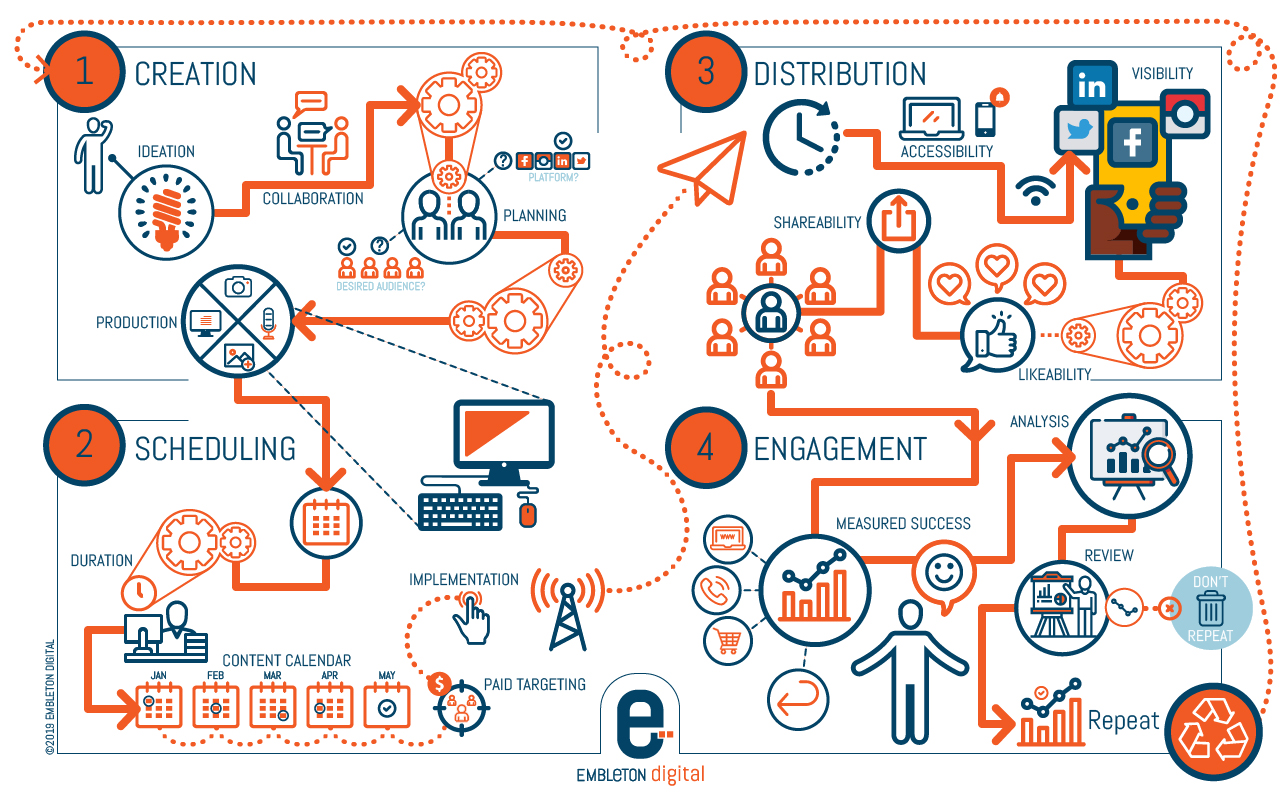Our Content Map will give you an idea of the scope and all the considerations to take into account to get the best results – results that can be repeated for ongoing success.
*Why produce Content? Rather than continually selling to your customers or potential customers, we believe creating informative content that is “free” will set you apart from your competitors as well as portray your brand in the mind of your customers as a thought leader in your field of expertise.
See the end of the page for the full Content Map.
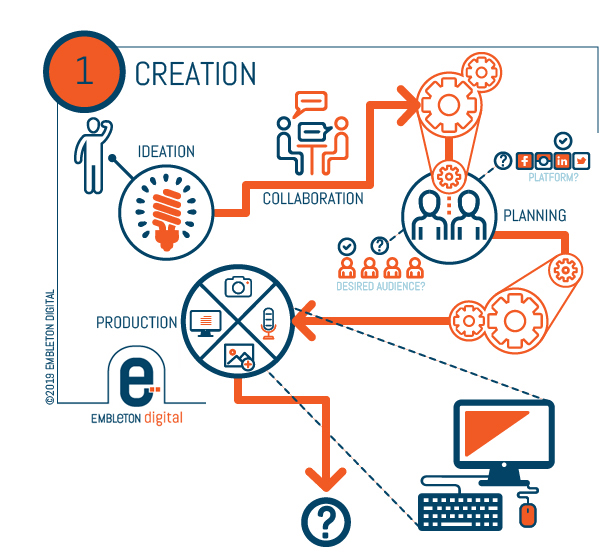
You have to start somewhere. How can you best explain a business process, or the key technology incorporated in one of your products? Are there tips you can provide in bullet form (or an infographic like ours!) to highlight issues a customer could have in their lives?
1. Creation:
- Ideation:💡💭Realizing you need to create a piece of content for your audience, or prospective audience, is the first step to getting creative, having fun and spearheading the thought leadership in your field.
- Collaboration: 💬🗣If you have a team, gathering them around to brainstorm the idea further, if it’s just you, bang it out on paper. Hone the message.
- Planning: 🎯👥Who is it aimed at? Craft audience profiles – who they are, age, location, interests etc. What platform would that audience be most active on? What days of the week and times of the day are they active?
- Production: Identify the best means of communicating the message – 🖊written, 🖼graphic/📷photo, 🎬video, 🎙audio. If you have the skills to put this together, great. If not, find those with the necessary skills. Produce!
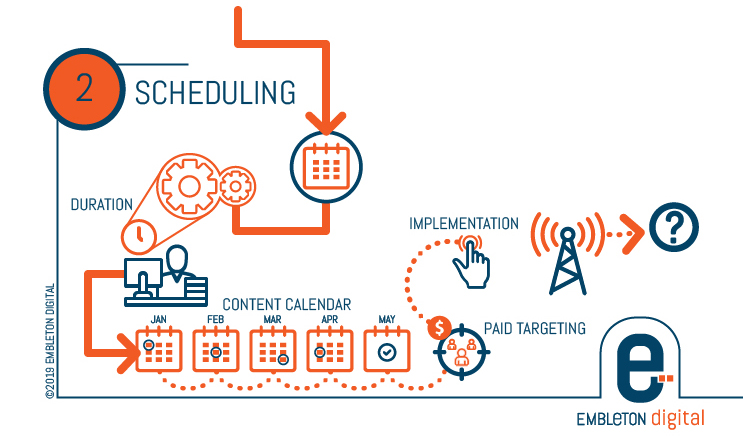
The creation is done, now to plan the best ways to get it in front of the ideal audience to maximize exposure, engagement and returns.
2. Scheduling:
- Duration: 🕒How long are you going to run with it? Is it a quick post (one day) or a longer term campaign – a month or more?
- Calendar: 📅From your audience profile process (from Phase 1) you will have established the best days of the week to put out content. Use this to plot weekly and monthly output. Your Content Calendar will give you a good overview of regularity of posting.
- Paid Targeting: 💰📍Taking your exposure and penetration to your desired target audience to the next level, paid targeting, or Content Marketing, is ideal for specifying who you want to reach (again, based on your audience profile). Social media gives you the tools to get specific, down to within a few kilometre radius.
- Implementation: ✅▶️Pushing the button! Once you’ve actioned the content, you DON’T sit back and watch. You keep an eye on how your content is performing on an hourly or daily basis.
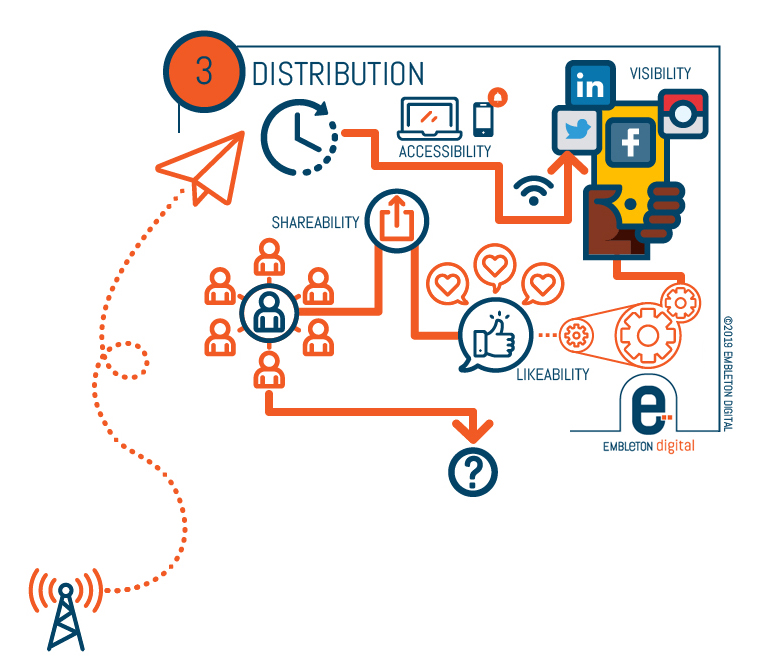
The best format on specific devices determines how effective content is consumed. The ideal platform, depending on where your desired audience is most active. And how interesting the content is to stop and look, like and share on. These factors result in your content going that extra mile.
3. Distribution:
- Accessibility: 📲💻 How your audience is accessing your content is essential in understanding how the content is presented. Viewing on mobile is different to a desktop machine. Is it efficient on a mobile for data and speed? Is an image ideally cropped (square vs horizontal)?
- Visibility: 👀 Getting the content in front of people is simple enough, but getting them to pause for that fraction of a second to engage is key. Does it grab their attention in the first second it appears on their device or in their social feed?
- Likeability: 👍😍 Presenting content rather than a sales pitch is ideal for Content and Content Marketing. You are giving out free information. But still, is it something that is interesting to view or read for any length of time?
- Shareability: 🔗 Likes are great but Shares are even better because it means that person has decided that it is something worth telling others about – think of it as endorsing your ideas. Depending on the platform (social, website etc), are the means to share it simple and quick?
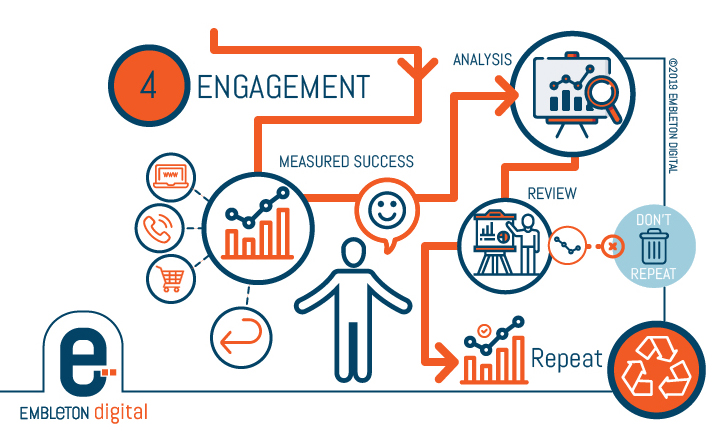
The final phase of creating content (rather than continually advertising your products and services is Engagement. What does your data tell you about your content? What can you improve and what can you repeat?
4. Engagement:
- Measured Success: 📈It won’t take long before you are seeing the measured success or *failure of your content. *We don’t believe any piece of content is a failure because at the very least it will give you information (data has value) that will inform on what to do or what not to do again. But one failure doesn’t mean that the content won’t work the next day or the next week. There are many factors in the digital world that are affected by real world happenings – be it political or social.
- Analysis: 🔍Take the time to go over results. Website analytics and social media metrics all give insights as to how your audience reacted to the content. Analyze on a daily basis and make adjustments ASAP – if you don’t have to wait for a campaign to end, adjust now!
- Review: 📊 How you interpret your data is essential to how you move forward into the next phase. Did it meet expectations? Did it reach an audience you didn’t expect?
- Repeat / Don’t Repeat: 🔄♻ / 📉 Use what worked to learn, enhance and to do it again. Use what didn’t work to improve, adjust and not repeat. Learn who your audience is. You may think you know who your audience is when you start but time will tell. Is it the right audience for your business? Do you need to try different approaches to find the right audience?
🔄REPEAT. ⚙KEEP PRODUCING.
